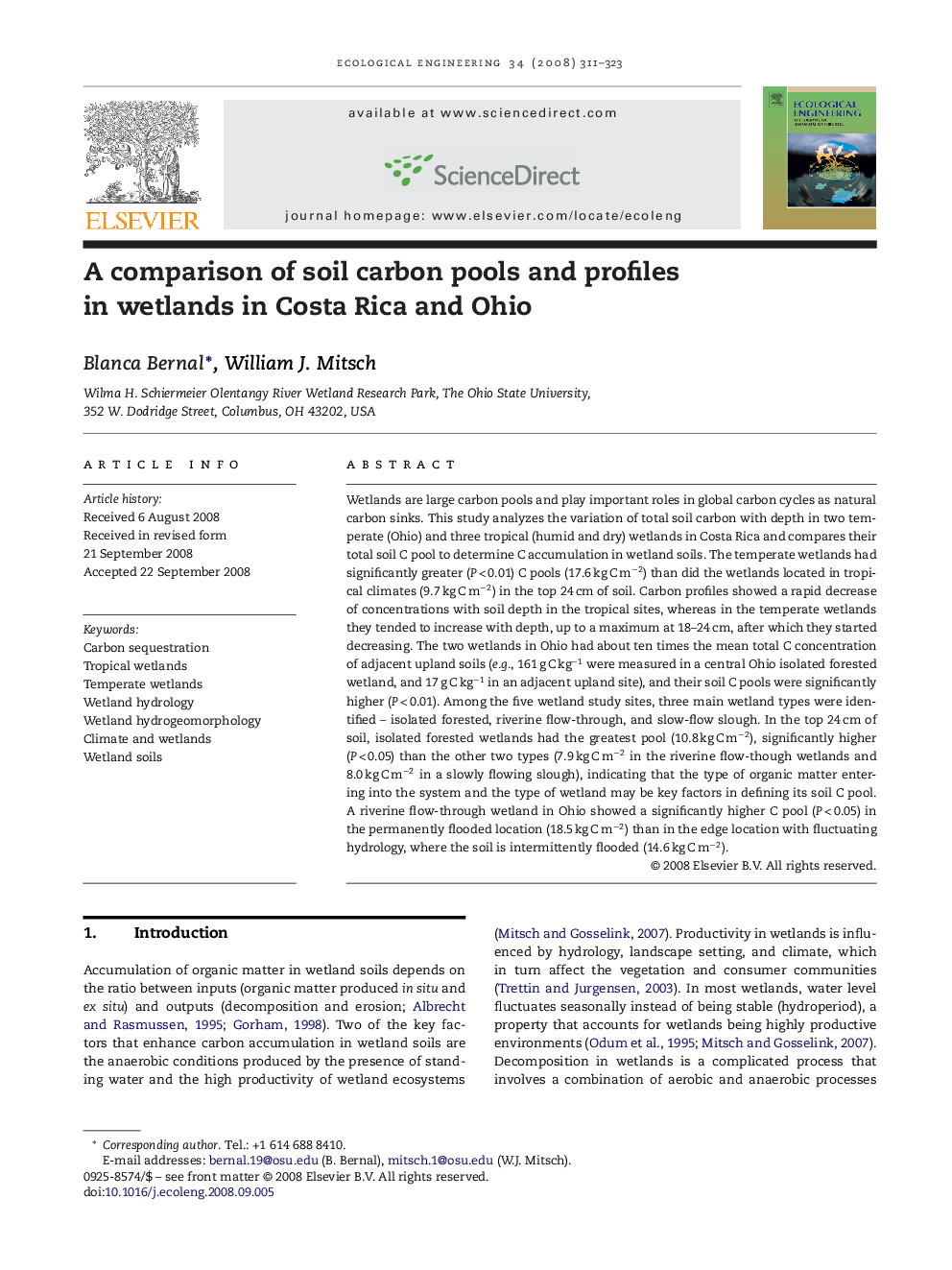| Article ID | Journal | Published Year | Pages | File Type |
|---|---|---|---|---|
| 4390692 | Ecological Engineering | 2008 | 13 Pages |
Abstract
Wetlands are large carbon pools and play important roles in global carbon cycles as natural carbon sinks. This study analyzes the variation of total soil carbon with depth in two temperate (Ohio) and three tropical (humid and dry) wetlands in Costa Rica and compares their total soil C pool to determine C accumulation in wetland soils. The temperate wetlands had significantly greater (P < 0.01) C pools (17.6 kg C mâ2) than did the wetlands located in tropical climates (9.7 kg C mâ2) in the top 24 cm of soil. Carbon profiles showed a rapid decrease of concentrations with soil depth in the tropical sites, whereas in the temperate wetlands they tended to increase with depth, up to a maximum at 18-24 cm, after which they started decreasing. The two wetlands in Ohio had about ten times the mean total C concentration of adjacent upland soils (e.g., 161 g C kgâ1 were measured in a central Ohio isolated forested wetland, and 17 g C kgâ1 in an adjacent upland site), and their soil C pools were significantly higher (P < 0.01). Among the five wetland study sites, three main wetland types were identified - isolated forested, riverine flow-through, and slow-flow slough. In the top 24 cm of soil, isolated forested wetlands had the greatest pool (10.8 kg C mâ2), significantly higher (P < 0.05) than the other two types (7.9 kg C mâ2 in the riverine flow-though wetlands and 8.0 kg C mâ2 in a slowly flowing slough), indicating that the type of organic matter entering into the system and the type of wetland may be key factors in defining its soil C pool. A riverine flow-through wetland in Ohio showed a significantly higher C pool (P < 0.05) in the permanently flooded location (18.5 kg C mâ2) than in the edge location with fluctuating hydrology, where the soil is intermittently flooded (14.6 kg C mâ2).
Related Topics
Life Sciences
Agricultural and Biological Sciences
Ecology, Evolution, Behavior and Systematics
Authors
Blanca Bernal, William J. Mitsch,
